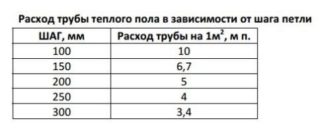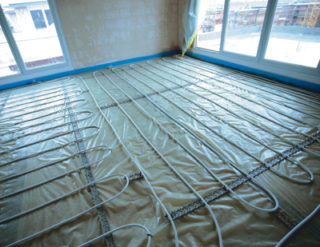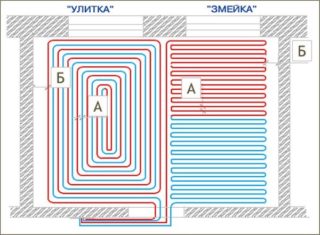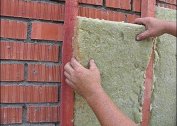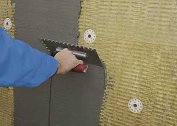Underfloor heating is an additional or main heating device. To ensure a comfortable room temperature, you need to properly mount the system. When creating a heating plan that includes a warm floor, you need to take into account different indicators, which include the annular distance. Its calculation depends on many individual room parameters.
Advantages of the system
When arranging a residential building, it is important to pay attention to heating. A comfortable and economical way is to create a warm floor. It allows you to save up to 30% of heat with a ceiling height of 2.5 m and about 50% at a height of more than 3.5 meters. Water underfloor heating is a complex structure, which must be taken into account when creating many factors.
The advantages include:
- Heated the entire area of the room. For this, the most comfortable method is used - the greatest heat below and lower temperatures at the level of the head.
- Lack of strong convection. Heat does not rise to the ceiling, so there is no unnecessary expense and loss. This also leads to savings.
- The absence of contamination of the system and its hygiene. Dust quickly builds up on radiators, which can interfere with the operation of the equipment. The water floor accumulates less dirt, it is easier to remove it.
- Warm floor takes up minimal space. Furniture and partitions will not impede maximum heat.
- Safety. The design does not harm the environment and human health.
- System availability. All the necessary materials can be found in any hardware store for a different budget.
- Strength. Subject to installation conditions and proper operation, the floor will last for decades.
- System self-regulation. It turns on and off when it reaches a pre-set temperature. This also leads to significant savings and the absence of waste of thermal energy.
It is possible to create a comfortable heating only after careful calculations of the warm floor and communications that ensure the movement of the coolant.
Factors taken into account in the calculation
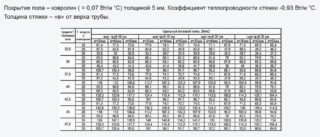 The most important parameter is the distance between the pipes of the warm floor, which is also called the laying pitch. The indicator depends on the coefficient of thermal conductivity, the diameter of the pipe, the location of the pipeline, as well as possible heat loss. In case of incorrect calculation, there is a risk of surface overheating or temperature differences. These phenomena give an additional load on the system and can lead to its failure.
The most important parameter is the distance between the pipes of the warm floor, which is also called the laying pitch. The indicator depends on the coefficient of thermal conductivity, the diameter of the pipe, the location of the pipeline, as well as possible heat loss. In case of incorrect calculation, there is a risk of surface overheating or temperature differences. These phenomena give an additional load on the system and can lead to its failure.
The effect of thermal conductivity
You need to familiarize yourself in advance with all the varieties of pipes that are traditionally used to heat a house with a warm floor. The best materials that conduct heat are the following materials, arranged in descending order:
- copper;
- steel;
- metal plastic;
- crosslinked polyethylene;
- polypropylene.
The higher the thermal conductivity, the greater the pitch between the pipes. Corrugated pipes made of copper and steel are the best option, but they are rarely used for a water floor heating due to their high cost. Polypropylene pipes conduct heat the worst. They are also rarely used because of their poor elasticity.
Influence of pipe diameter
The cross section of the pipeline also affects the distance. The smaller the diameter of the main element of the system, the smaller the distance should be between the loops in the contour of the warm floor. The pitch of the pipe laying 16 mm will be 10-15 cm. If the diameter is 20 mm, the pitch is 15-20 cm.
It is recommended to use elements with a diameter of 16-25 mm so that the efficiency of the heating system does not deteriorate.
Heat loss and location
The heating circuit is a complex system, so the step between the loops may be unstable. If the underfloor heating is used in rooms with strict requirements regarding air temperature (bathroom, industrial facilities), the step may be constant. The following values are observed:
- Large industrial premises, pools, water parks - 20 cm between the loops with a pipe diameter of 20 mm.
- Bathroom - laying pitch 15 cm.
In other cases, the values are approximate and unequal along the length of the entire pipeline. It is necessary to observe the minimum distance between the turns along the walls, since here the greatest heat losses are observed. The distance increases from the walls, the step increases. If the heat loss of the hot pipes is less than 50 W / m2, the step will be 30 cm. If the heat loss exceeds 80 W / m2. you must follow the minimum step.
Traditionally, pipes are laid in such a way that there is a distance of 100-300 mm between them. More accurate values are obtained after a general calculation.
The approximate distance in the bathroom is 10-15 cm. In the living room, the interval increases to 25 cm. For corridors, kitchens, utility rooms, pantries, the optimal value is 40-35 cm. Values can vary in different parts of the room.
Styling forms
The method of laying the pipeline also affects the efficiency of heating a warm floor and the distance between the pipes. The most popular are the snake and snail. How to roll out a warm water floor depends on the individual characteristics and purpose of the room.
Snake
With this method of placement, pipelines are laid parallel to each other. The room is heated unevenly, so the method is used in small rooms. It also requires additional heating from radiators and a small distance between the pipes.
In the case of using an angular snake, the pipe is laid along the outer corner, and the following turns are laid in parallel.
With a double snake, the beginning and end of one contour is laid in parallel. This method provides the most uniform heating of the room.
Snail
This method is also called a shell or spiral. Pipes are laid in a spiral, which ensures uniform heating of the entire room. Suitable for use in large rooms.
Which method is better
The best effect can be achieved by combining the two methods of communication under the floor. In large rooms (living rooms, halls) use a snail, and in small ones a combination of different types of snakes. In the bathroom, the corridor fits an ordinary snake. The rooms are medium in size - double. The corner method is used only for combined styling.
If a combined version is used, it is better to additionally heat the following zones and lay them with a snail:
- a site near the desktop, piano or other object where a person sits motionless for a long time;
- play part of a children's room;
- places near a bed, a sitting area with upholstered furniture.
Preliminary, they outline the layout of pipelines with all distances and separate sections where more / less intense heating is needed. Only then can pipes be laid under the underfloor heating.
Installation Recommendations
You can make a quality installation with your own hands. To do this, you must adhere to the basic rules:
- Do not change the approved piping layout during installation.The developed plan has been calculated, so the slightest changes will lead to disruption of the system.
- The coolant must not be subjected to mechanical tension, heat, or deformation.
- Pipes should be cut before they are connected to the pump.
- Do not step on the coolant during installation.
- To make it easier to lay pipes, you can use a lined foil substrate.
Following these recommendations, you can make high-quality laying of pipes for underfloor heating.
Features of pipe fixation
You can fix pipes under a heated floor in one of the following ways:
- planks made of plastic;
- rugs that have laying grooves;
- metal tapes;
- separate brackets.
The most convenient installation method is to attach the circuit to the clips. When using point brackets, a distance of 20-25 cm is observed. They are used to uniformly heat the screed, regardless of the chosen laying procedure.

